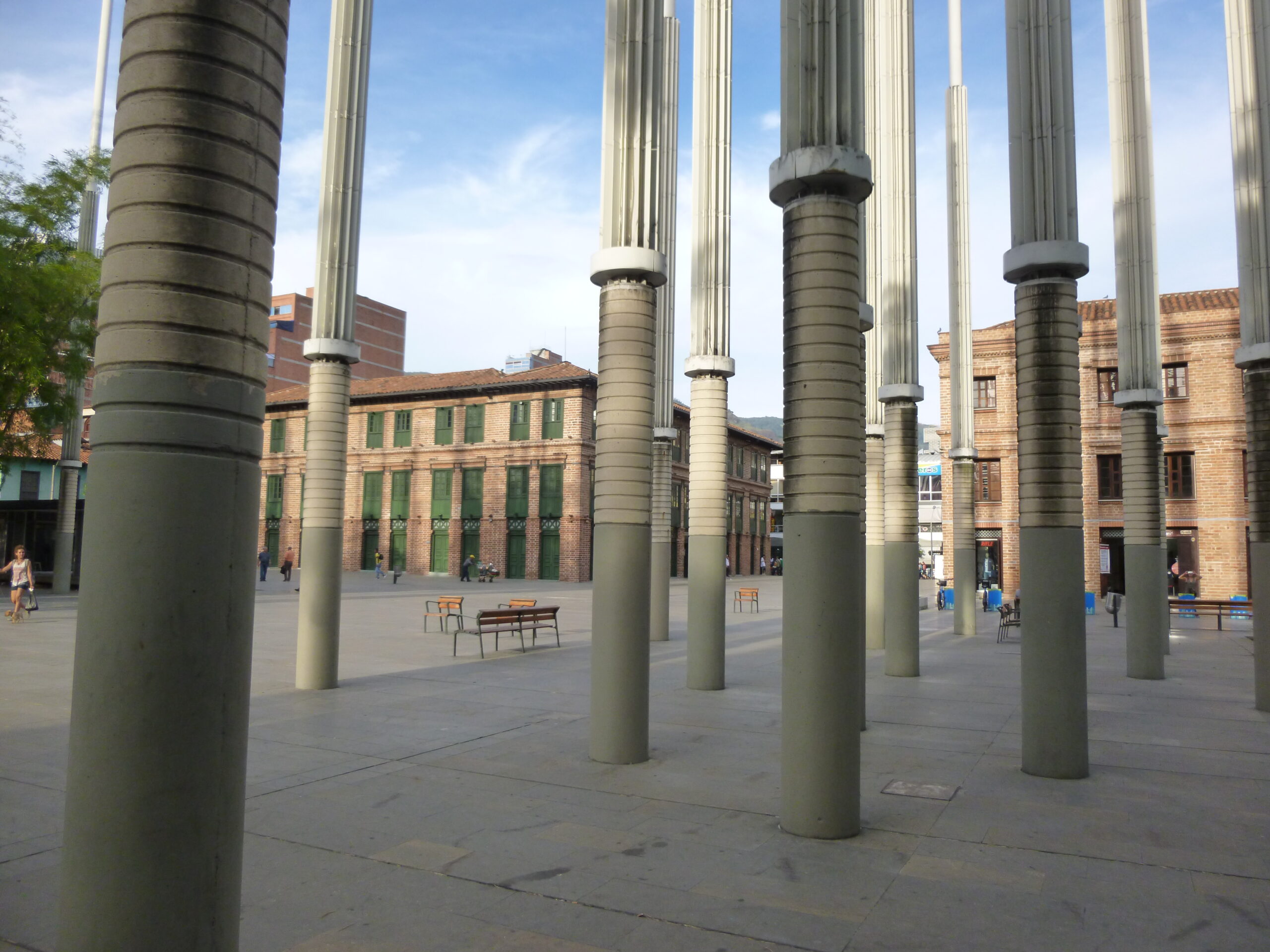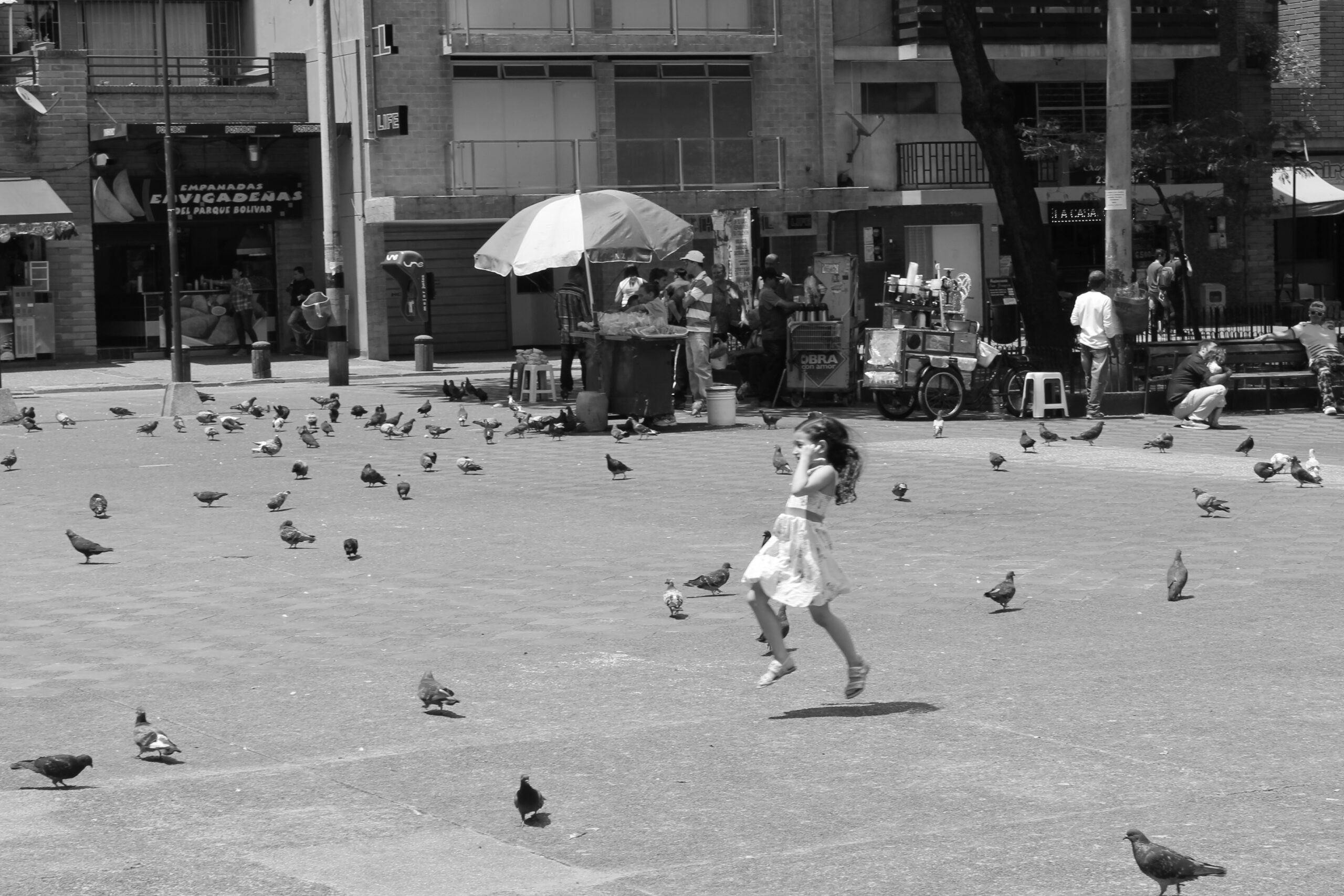
The fifth and last part of the Medellín series by Alejandro Restrepo-Montoya is about the five guiding principles of the Centre of Medellín Urban and Environmental Plan.
Billboard
Skyscrapper
Halfpage
Once known as the most dangerous city in the world, this January Medellín in Colombia was named the number one travel destination on the rise in South America. From a world full of darkness and crime, the city has stepped into the light – thanks to its own society, which remembered its values at the darkest moment.
The fifth and last part of the Medellín series by Alejandro Restrepo-Montoya is about the five guiding principles of the Centre of Medellín Urban and Environmental Plan.
Different studies have been carried out regarding the centre of Medellín, with the objective of rehabilitating it and creating a plan to that in coming years will allow for the settlement of more than 80,000 new families. This justifies the construction of new public spaces, the improvement of existing ones, urban development around urban spaces that includes sustainable public transport so that the city can be found in collective spaces designed for the improvement of the quality of life.
The development of the city in the valley reduced the presence of natural elements, and changed the course of the river over time. Some of the valley’s natural conditions were altered, causing some of its components to disappear. Therefore, the relationship between the centre and its natural origins is one of the starting points when talking about an urban and environmental plan. Being surrounded by mountains and having the presence of the river, the Centre of Medellín Urban and Environmental Plan is also a proposal that extends to other spaces within the city and which has been organised around five guiding principles:
Guiding principles: Quality of life
The activity of legal and illegal commercial exchange has displaced housing and other uses of a balanced ecosystem, to give rise to various pathologies that responds to exclusion and impoverishment. Although this territory has some of the oldest arboreal species that also have a patrimonial value, the natural component has also been displaced to give rise to a space transformed by other conditions. In addition to generating new housing through the use of the instruments defined by partial plans, to re-inhabit the centre all the necessary conditions must be considered in order to create a neighbourhood of neighbours, with public spaces where citizens can meet, recreation, culture, education and life. For all these reasons, this principle is the first priority and defines the general approach: the centre of Medellín as a vital space, a place to meet and coexist.

Guiding principles: Public space
The streets, parks, squares and urban paths articulate the uses and spaces that make up the interventions in the centre of Medellín. Public space is the place to have dialogue, to traverse or to spend time in. It is the expression of public culture and the way the city generates different relationships with those who inhabit it. Equity and security are indicated in the use of public space, and – in part – the vitality of a city and its territory is expressed in this measurer of citizen encounters. Streets, sidewalks, squares and parks are all places for the construction of a democratic, diverse centre that articulates its urban spaces with the rest of the city. Public space is a scenario of coexistence and security, citizen participation and the construction of citizenship. Through the proposed interventions, it is intended to improve air quality, increase shade with the presence of new plant species in order to improve climatic conditions, increase the area of accessible public spaces by more than 250,000 square meters and guarantee pedestrian and non-motorised mobility, and to articulate these places with the existing buildings and our patrimony, to consolidate diverse public spaces for meeting and coexistence.
Guiding principles: Culture
The creative, convoking, analytical, recreational and formative capacity of art and culture plays a dominant role in the conception of the Center of Medellín Urban and Environmental Plan. Its actions revitalisee public space and give it a meaning associated with the enjoyment of the collective space. Traditional cultural institutions and many others that seek to have their headquarters in the mansions and premises of the centre, and the students and communities that walk the streets of the commune are one of the most important assets that deserve to be summoned to add ideas – once again – through their messages and actions. It is necessary to provide a special place for the patrimonial wealth and identities that the centre of Medellín gathers together. The interaction between times and uses, the generational dialogue, the reuse and re-signification of history as a structuring axis of the collective space will be one of the priorities of the Plan, due to its capacity for communication, inspiration and commitment.
Guiding principles: Education
The centre of the city is one of the areas that has managed to summon one of the most populous and active student populations, with 120,000 prople. The summons that are glimpsed from this principle reach all possible forms of family in contemporary societies, ideals and dreams, thought and analysis. The challenge that arises from these lines in educational terms is the consolidation of a pedagogical centre; structured from knowledge, and from the exercise of teaching and learning. The corridors that communicate the classrooms of these educational institutions must be their streets, sidewalks, squares and parks; a sensitive, aware centre of education as an activity that strengthens individual and collective growth. The Plan also aims to create public programmes and projects for early childhood, recreation and sports. The centre of Medellín has not been considered permanently, and with the proportions that its importance demands in the interventions that the city has achieved in terms of integral human development and that – in a joint vision – has partially marginalised it from the contemporary dialogues and actions around citizenship, which hopes to base its relationships on co-responsibility and trust.
Guiding principles: Mobility
The convergence of the different transport systems that the city has managed to build in the last three decades has been one of the events that gives the centre its commercial capacity. A lot is still missing in trying to find a balance that benefits the pedestrian and his/her use of public space from a principle of order and respect. By organising mobility systems based on the criteria of safety, efficiency and the articulation of collective space will establish new orders and routes for pedestrians, alternative transport systems (such as bicycles), and public and private vehicles. In this case, establishing interfaces between private interests and public initiatives is one of the underpinnings necessary.
Steps into the right direction
Consequently, the articulation and implementation of the ordering principles contained in the Center of Medellín Urban and Environmental Plan generates the use and enjoyment of the centre and its urban space as a place for coexistence and diversity. The integral improvement of our centre is an activity directed to human situations, achieved through urban planning and architecture and arising from social needs, the vocation of public spaces and the history of the city and its identity.
The issue of housing that begins to redensify these places is very present in strategic planning in these urban centralities and the integral urban projects follow their course on the suburbs of the city. To this end, new lines for the Metro Cable and the Tram have been designed together with the improvement of other urban spaces. All these conditions of contemporary Medellín are part of a city that continues to look to the future with hope and that continues to think that inhabiting the city in its centralities and peripheries is a task that must continue to be carried out in order to bring some communities closer together, to generate recreational spaces where leisure, entertainment, fun and the exchange of thought will improve the quality of life.

It’s not over yet
Medellín continues to be illuminated by the value of the illusions and the ability to build our dreams. We have not finished the task yet; it will continue to be carried out continuously. We are aware that the problems are not over yet. It is undeniable that Medellín continues to suffer from situations of violence, but the work that has been maintained for generations has reported a condition of life that has strengthened hope.
Medellín has built its present state from the consecutiveness of its government plans, from the observation of social schemes and the evaluation of the social intention and priority to improve the condition and quality of life within the communities; to build the living spaces that our city has today.
That hope of belonging to, and living in, an ideal city is still possible. For this, the continuity of the commitment of its inhabitants, their critical and creative capacity and the will of our leaders will be fundamental. The purpose of governing citizens to provide security, well-being and growth to communities will be fundamental in the planning of urban strategies.
Thus, the city continues to rely on citizens meeting in its public spaces, with environmental quality, with environmental and sustainable hills, parks, rivers, corridors and road junctions; places where life passes by, where education and culture remain fundamental pillars of our society.
More than just a city
Medellín is both neighbourhood and life, water and mountains. It is also made up of dreams and hopes. It is the place for meeting friends, it is the street and the square, it is the park with its memories. It is the history – alive and present – of a city built among everyone. These reflections that explain the intervention in different physical spaces of the city from an urban and environmental perspective also aim to generate questions in order to define what the most appropriate strategies could be for continuing with these processes over time, for definging their conceptualisation and their development. Each intervention in the physical is the pretext for improving the quality of life of our communities. We dream of a city where one can travel with tranquillity, harmony and tolerance; values that will allow us to look forward to the future without forgetting about our history.
First part of the Medellín series.
Second part.
Third part.
Fourth part.












